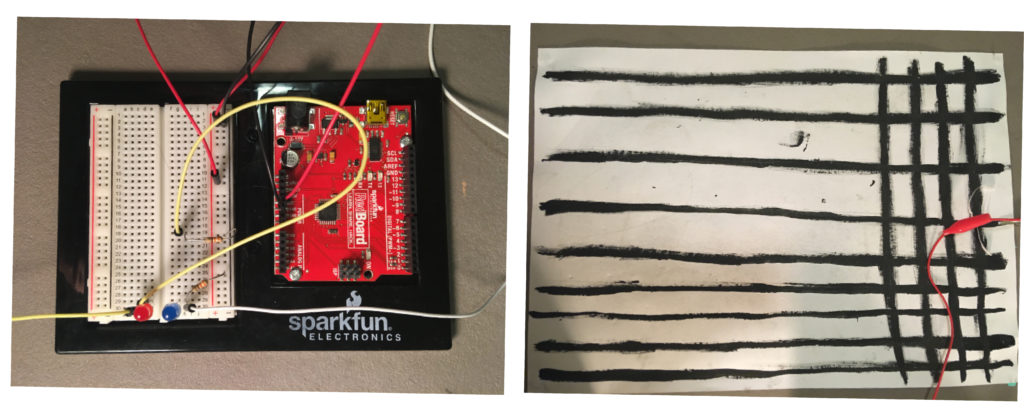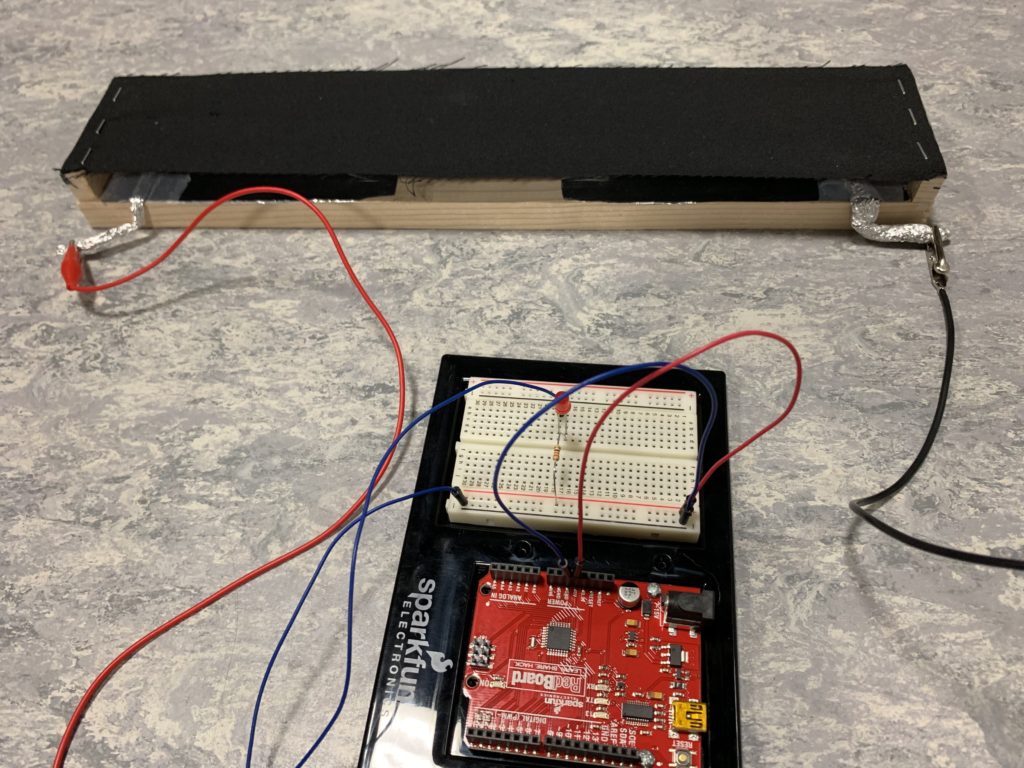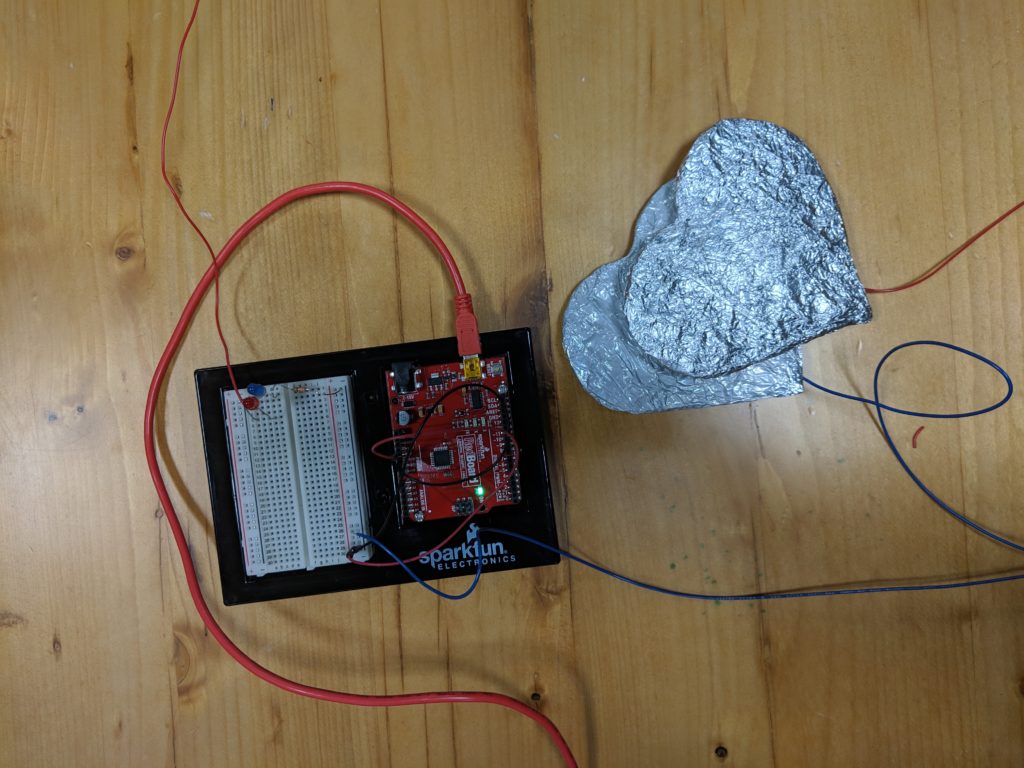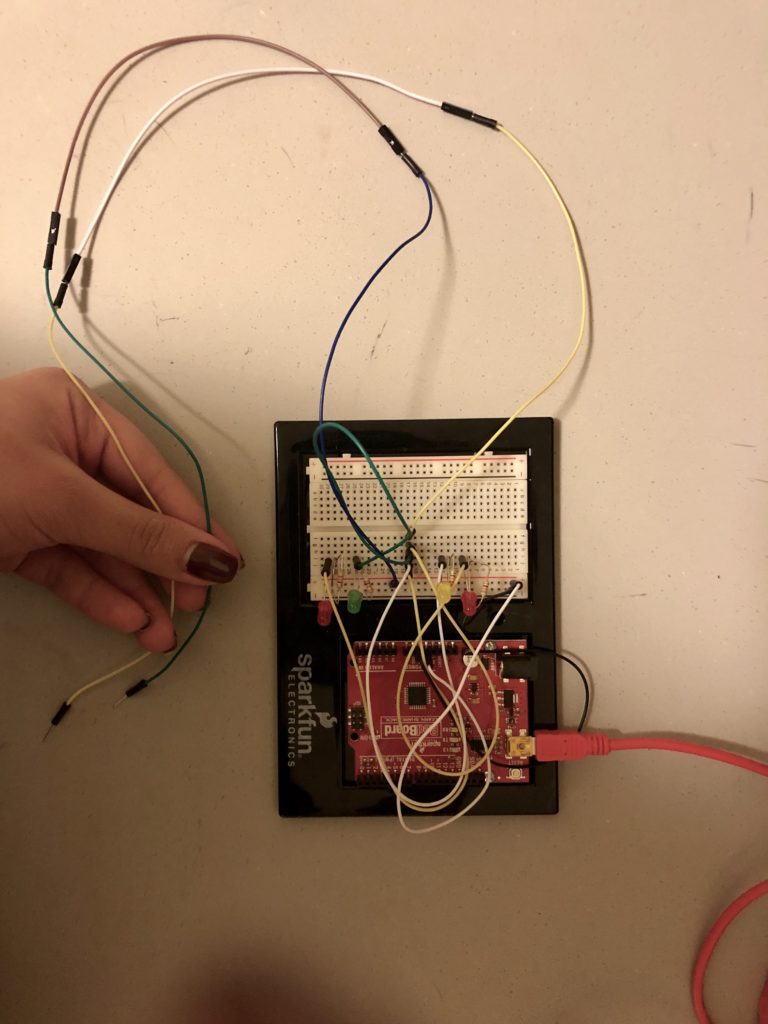As the professional dancer I certainly am (clearly demonstrated in the video as well), I built a switch that completes the circuit based on movement of the feet on a conductive “board”. I used somewhat simple techniques: I attached conductive tape to the soles of my shoes (later I added a circle of aluminium foil to get better coverage), attached wires to the end of the tape to make sure the current flows to the LEDs. For the board, I used a piece of paper with lines of conductive paint on it, to get the right texture and surface for some dancing. As you can see on the picture below, this is just a tryout (I didn’t want to waste that much of a paint, therefore I tried to figure out a way to get full circuit coverage with the least amount of paint). And although I realise that there are so many ideas/materials that would work better (but trust me, dancing on aluminium foil is not compatible… with anything, I tried), this was a lot of fun to make and a lot of learning in the process.




